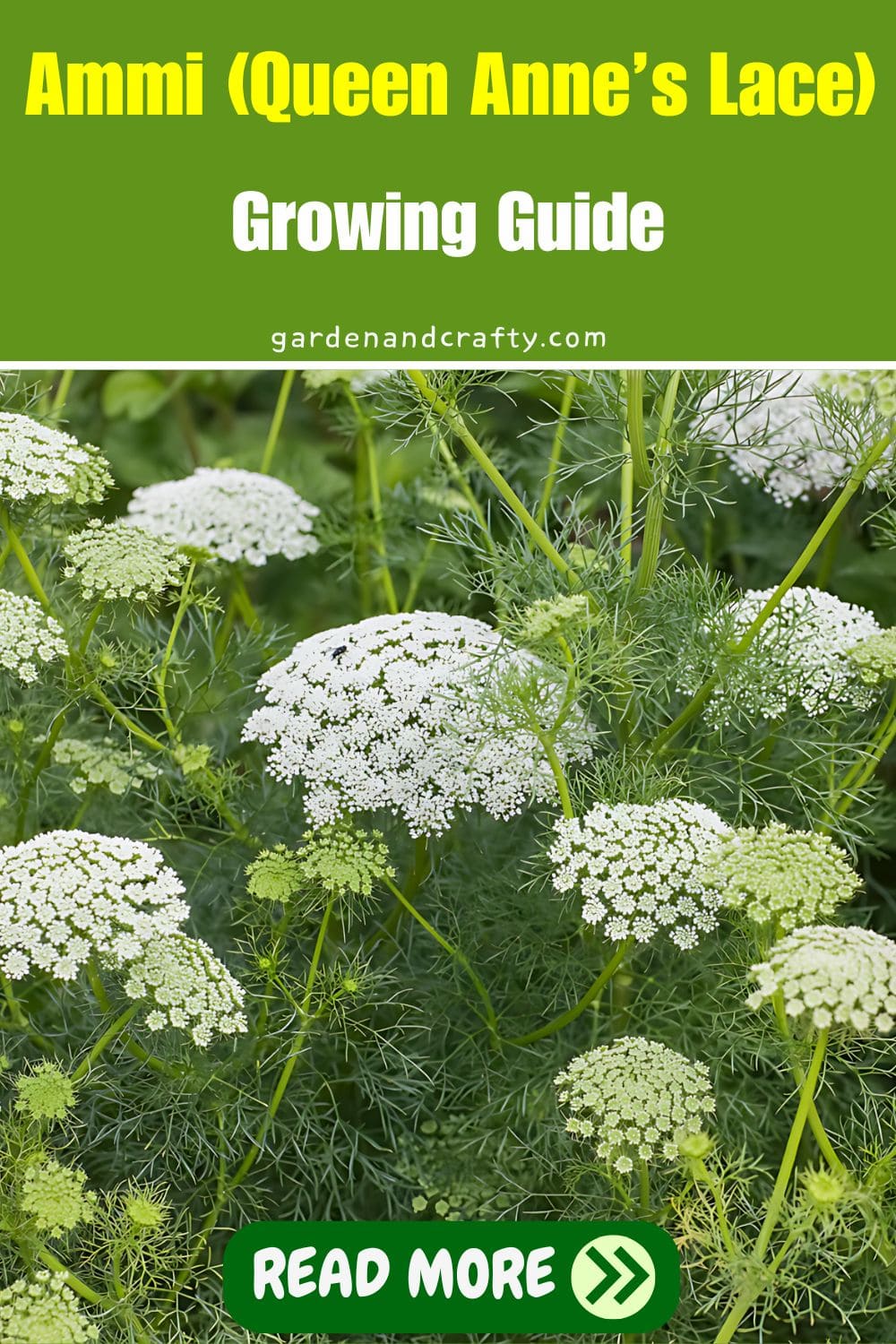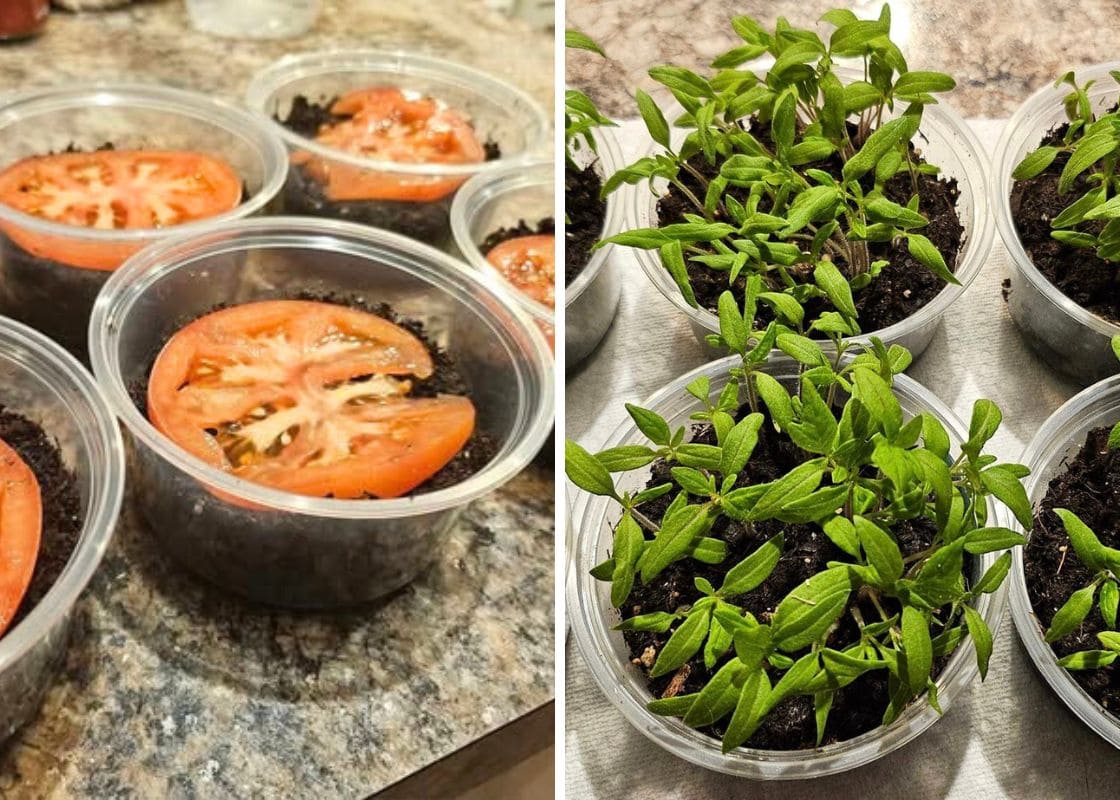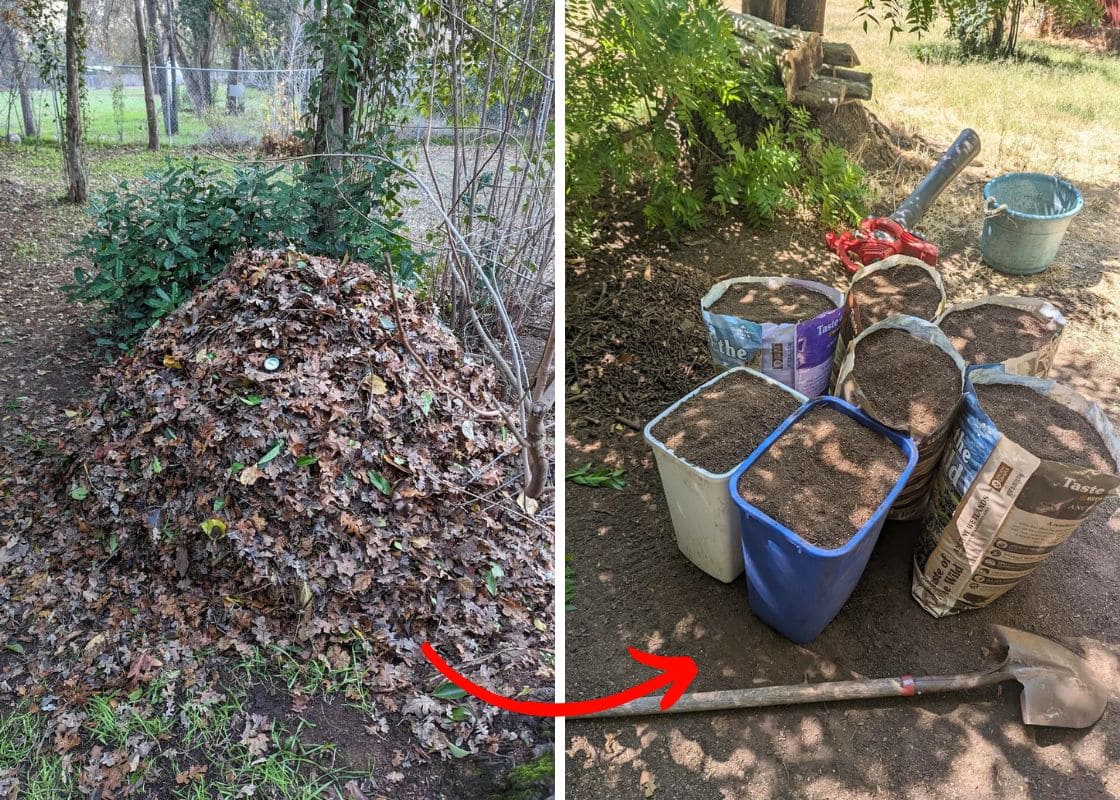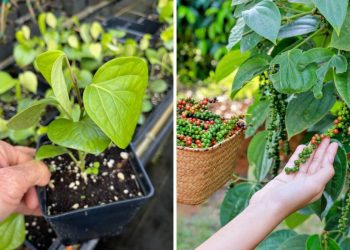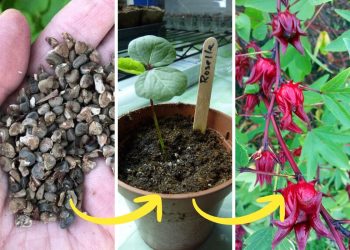Creating a captivating bouquet often relies on the perfect blend of “filler” flowers, and the Ammi flower excels in this role.
Known scientifically as Ammi majus, this plant boasts delicate, lacy white blooms that add elegance to any arrangement.
Beyond their beauty, Ammi flowers are known for their medicinal properties, particularly in treating skin conditions like psoriasis and vitiligo.
Summary:
- Ammi flowers are stunning annuals with delicate, lacy blooms that add a touch of elegance to any garden.
- These flowers thrive in full sun to partial shade and prefer a well-drained, sandy or loamy soil.
- Caring for ammi flowers is relatively easy and you can use them for various DIY projects.
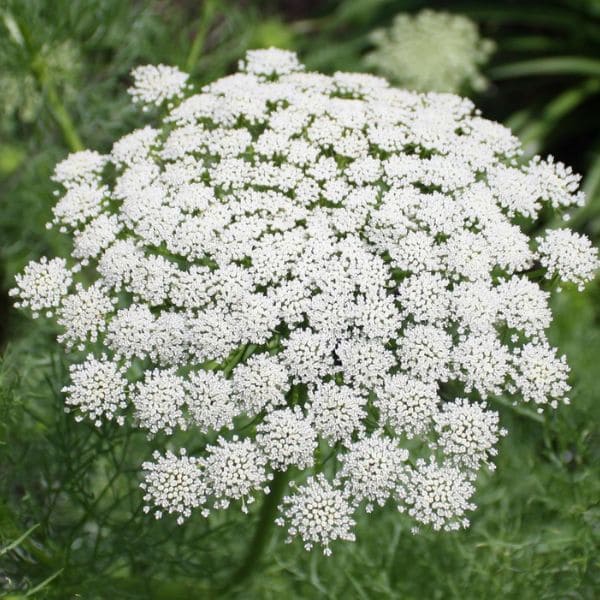
| Scientific name | Ammi majus |
| Common name | Bishop’s Weed, Queen Anne’s Lace, Laceflower, Bullwort |
| Family | Carrot Apiaceae |
| Plant Type | Annual |
| Height | 4 feet |
| Sunlight | Full sun to partial shade |
| Soil | Well-drained soil |
| Flower Color | White |
| Flowering Season | Summer (June to August) |
| Habitat | Native to the Nile River Valley; in meadows, fields, and gardens |
Propagation
I always start by choosing quality seeds and soaking them in water for 24 hours before planting.
Then I begin sowing seeds indoors about 6-8 weeks before the last frost. You can use seed trays filled with a well-draining seed-starting mix.
Next, scatter the seeds on the surface and lightly cover them and place the trays in a warm, bright area. From my experience, this combination ensures the best start for the seeds.
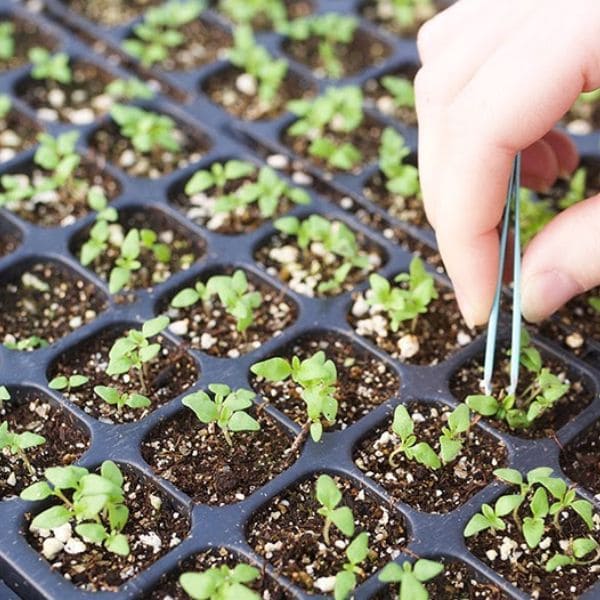
You can expect to see seedlings within 10-14 days. Gradually acclimate the seedlings to outdoor conditions about 1-2 weeks before transplanting them into your garden.
Growing Ammi Flowers
Preparation
Here are 3 types of ammi flowers I’m really into:
- Ammi majus resembles wild Queen Anne’s Lace, featuring light, airy blooms that thrive in spring and early summer, making it a favorite for its ethereal beauty.
- Ammi visnaga is more robust, with sturdy greenish-white blooms that perform well in summer heat and fall, adding structure to bouquets despite its distinct smell.
- Dara, also known as Daucus carota or False Queen Anne’s Lace, offers pink, purple, and white blooms. Though not technically an “Ammi,” it adds a unique charm to arrangements and gardens.
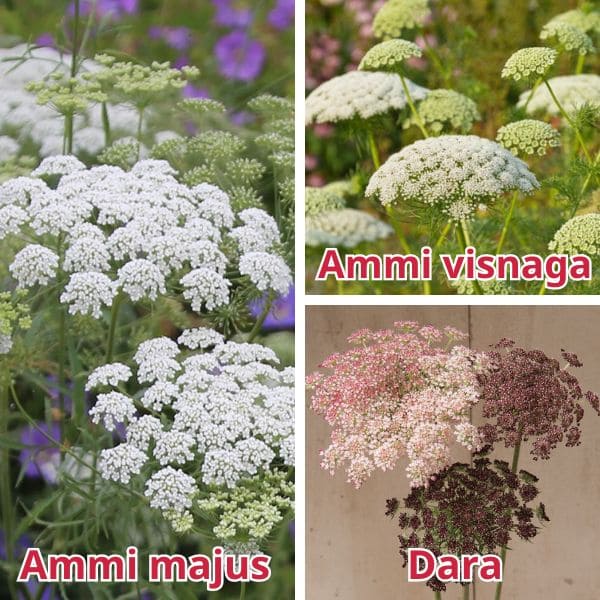
Ammi flowers thrive in full sun to partial shade with at least 6-8 hours of sunlight daily and prefer well-drained, fertile loamy soil with an optimal pH level between 6.0 and 7.5.
Therefore, you need to find a spot with full of sunlight and loosen the soil to a depth of about 12 inches, then add compost or well-rotted manure.
To enhance germination rates, one tip for you is placing ammi seeds in the refrigerator or freezer for two weeks before sowing to mimic winter weather.
Direct Sow in the Garden
If you plan to sow seeds in spring, wait until after the last frost date and if you prefer fall sowing, plant the seeds in late fall to allow natural cold stratification over winter.
I prefer sowing seeds in mild spring, so I sow them at a shallow depth of about 1/8 inch and spaced them roughly 12-18 inches apart.
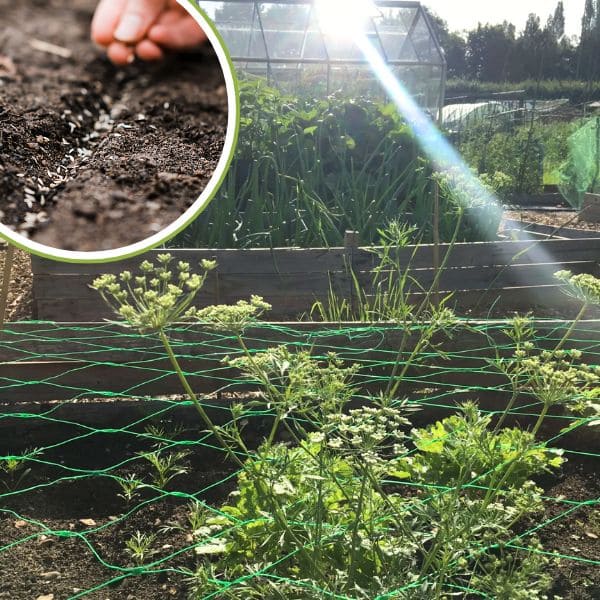
Start Seedlings Indoors
If you plant to sow ammi seeds indoor, begin this process 6-8 weeks before the last expected frost date.
You should sow the seeds on the surface and gently press them into the soil, being careful not to bury them too deeply.
Also, remember to keep the soil consistently moist and maintain a temperature of 65-70°F (18-21°C) to help them germinate.
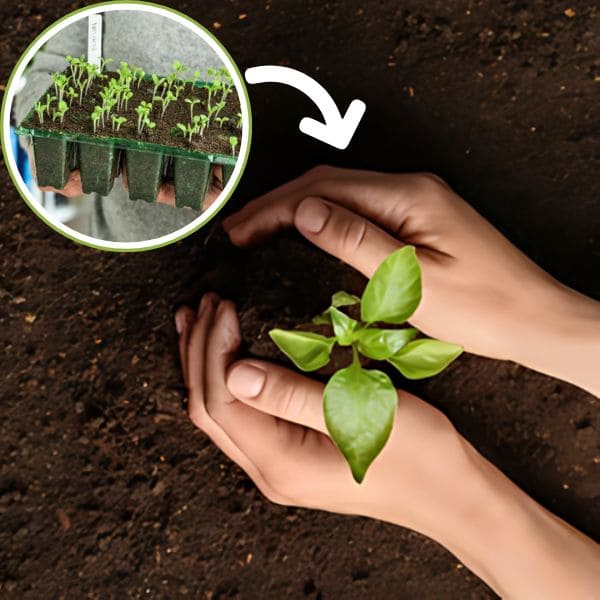
Once the seedlings reach 2-3 inches, transplant them into the garden, spacing them 12-18 inches apart. It’s exciting to see them settle into their new home.
Besides, I like to plant ammi alongside zinnias, cosmos, and sunflowers to attract pollinators and enhance the health and vibrancy of my garden.
Care for Ammi Flowers
Here are main requirements for taking care of Ammi flowers:
- Ensure soil remains consistently moist.
- Apply 50 gm Nitrogen per m2 NPK 17:17:17 one month.
- Provide stakes or supports for tall varieties.
- Make sure Ammi receives at least 6-8 hours of sunlight daily.
- Plant successions of Ammi majus and Ammi visnaga 2-3 weeks apart to extend the flowering period.
Light
Ammi flowers need 6-8 hours of sunlight daily, thriving in full sun to partial shade. Proper sunlight ensures healthy growth and abundant blooms.
If you plant them in a spot that got a bit too much shade., they will grow, but the blooms weren’t as abundant or vibrant as those in sunnier locations.
Soil
Ammi flowers prefer well-drained, fertile loamy soil with a pH between 6.0 and 7.5 to retain moisture while allowing excess water to drain, preventing root rot.
If you want to enhance fertility and structure of the soil in your garden, I recommend adding it with compost or organic matter.
Water
Ammi flowers need about 1 inch of water per week. In the early morning, I usually water deeply once or twice a week to help the plants absorb moisture.
During hot weather, you should increase the watering frequency to keep the soil from drying out too much.
In addition, you can add a layer of mulch around the plants to retain moisture and keep the soil temperature more stable.
Temperature and Humidity
Ammi flowers thrive in temperatures between 60°F to 75°F (15°C to 24°C) and are suitable for USDA zones 5-9. Extreme heat can cause wilting and fading.
To protect them, you should provide partial shade during the hottest parts of the day and ensure consistent watering.
Young seedlings and tender growth are vulnerable to late frosts; so, protect them with row covers or cloches if frost is expected.
Pruning
To encourage new blooms and maintaining plant health, you should use clean, sharp shears to remove spent flowers.
Besides, cutting stems at a 45-degree angle, just above a leaf node helps promote continuous flowering.
Fertilizer
You should apply nitrogen at a rate of 50 grams per square meter using NPK 17:17:17 one month after planting.
I’ve failed when adding excessive nitrogen. As a result, I witnessed my ammi flowers with weak stems and poor quality cut flowers.
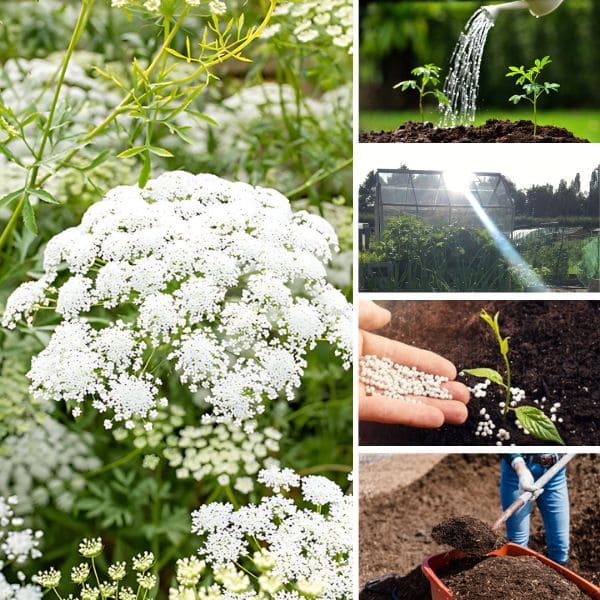
Precaution:
Ammi flower sap can cause painful burns and blisters when exposed to sunlight, known as phytophotodermatitis.
When handling these flowers, you need to wear long pants, long sleeves, and gloves. If sap contacts your skin, wash immediately with soap and water and avoid sunlight.
Pests and Diseases
Ammi flowers can attract pests like aphids and spider mites. Aphids cause distorted growth and leave a sticky residue, while spider mites lead to stippled leaves and fine webbing.
To manage these pests, I use insecticidal soap or neem oil. Introducing beneficial insects like ladybugs and predatory mites can also help control infestations naturally.
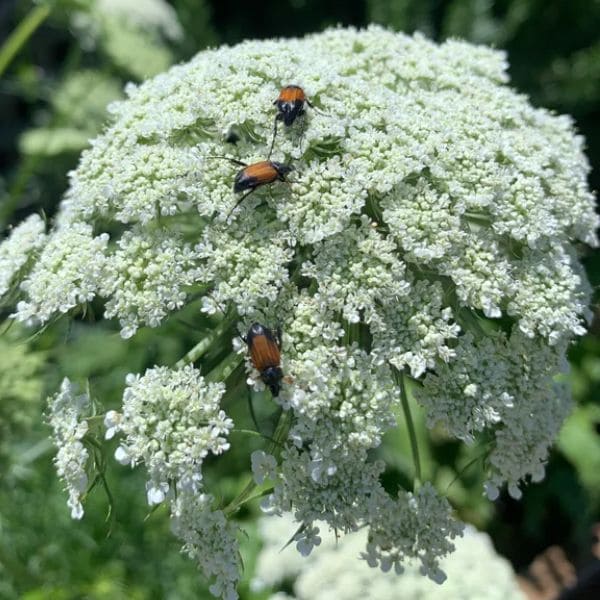
Powdery mildew is another common issue, it appears as a white, powdery coating on leaves that hinder photosynthesis and weaken the plant.
Therefore, ensure good air circulation and avoid overhead watering can prevent this. If mildew appears, you can treat it with a fungicide.
Common Problems
Yellowing Leaves
Yellowing leaves often indicate drought stress, nutrient deficiency, or incorrect soil pH.
You need to ensure consistent watering, use mulch to retain soil moisture, and apply a balanced, all-purpose fertilizer to provide necessary nutrients.
Moreover, test the soil pH and adjust it with lime or sulfur to maintain the optimal range of 6.0 to 7.5.
Poor Growth
Poor growth can result from overcrowding, nutrient deficiency, or heat stress. Immediately, you need to thin seedlings and space plants to reduce competition for resources.
During hot weather, you can also provide partial shade and ensure consistent watering to prevent heat stress.
Harvest
The best time for you to harvest ammi flowers is in the early morning when they are fully hydrated.
Using sharp, clean scissors to cut stems at a 45-degree angle helps you minimize damage to the stems, reduce the risk of disease and increase the surface area for water absorption.
Note that you should leave a few inches of foliage at the base, then place cut stems in clean water immediately to keep the flowers hydrated.
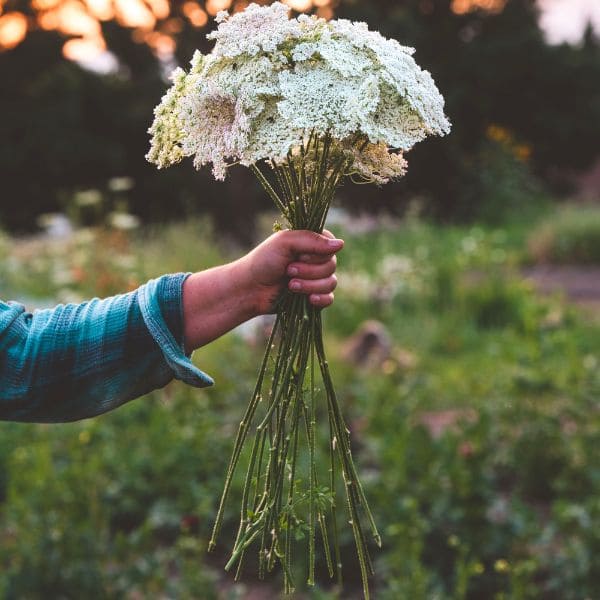
Preservation
Fresh Ammi Flowers Arrangement
After cutting, you can let the flowers sit in a cool, dark place for a few hours or overnight to maximize hydration.
Then you can make use of your ammi flowers pairing with roses or lilies to make your own arrangement vase.
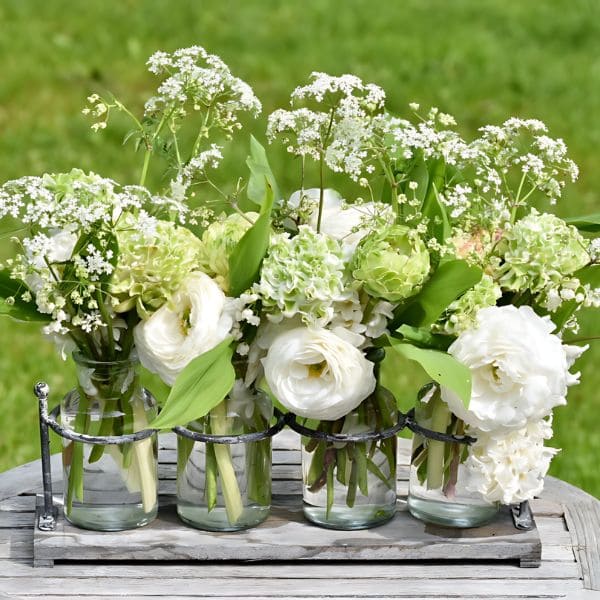
Dried Ammi Flowers
If you want to store your ammi flowers up to 12 months, gather small bunches of stems and secure them with a rubber band or string.
Next, hang the bundles upside down in a cool, dry, and dark place with good air circulation. When they dry completely, you can use them in wreaths, garlands, and other decorative projects.
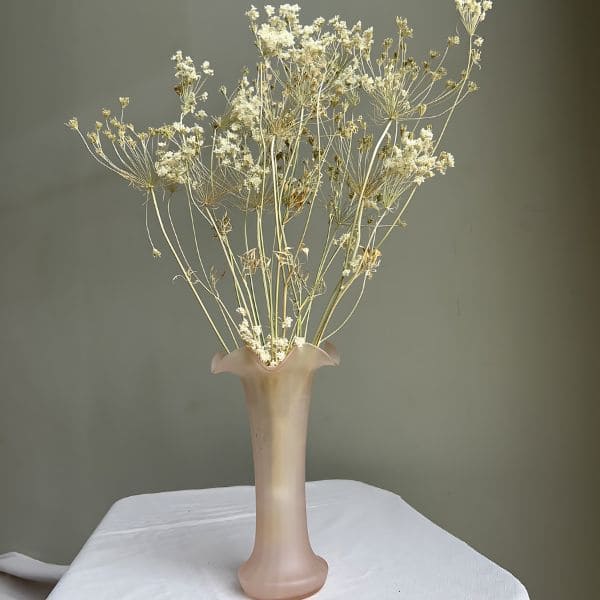
Silica Gel Drying
You can start by filling the bottom of an airtight container with a layer of silica gel.
Then place the flowers in the container without letting them touch each other and gently pour more silica gel over the flowers until they are fully covered.
Finally, seal the container and store it in a cool, dry place. By this way, you can enjoy ammi flowers up to 1-2 years.
